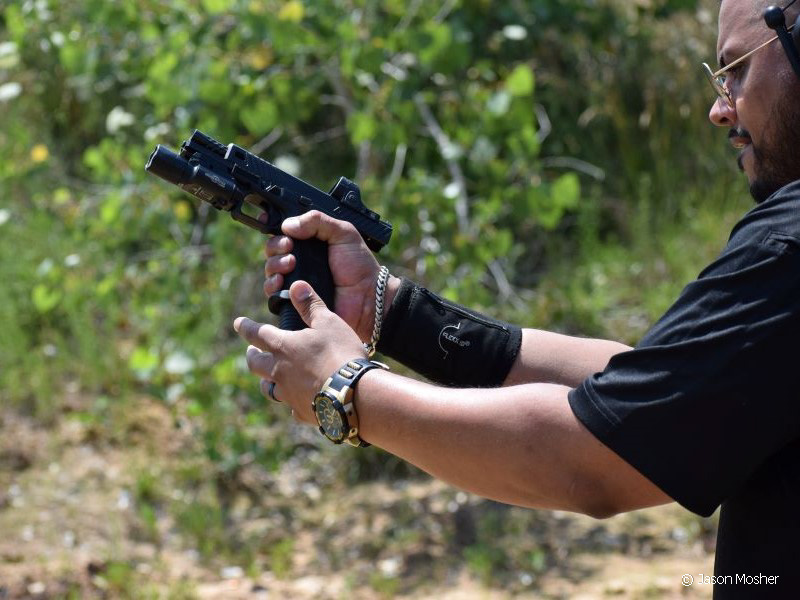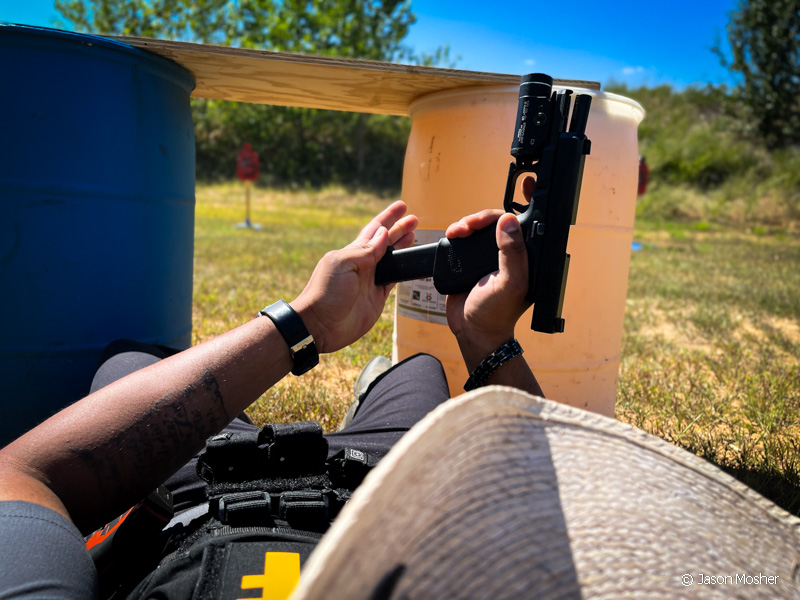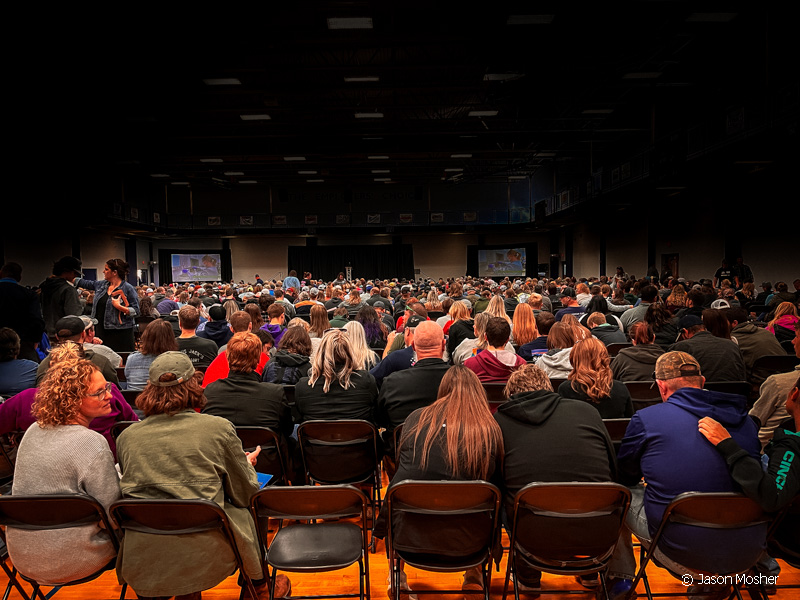Accomplishing a magazine change is simple and because of that, it’s easy to overlook the training aspect of it. But there are times when changing a magazine in your firearm can become somewhat challenging. Stress, clothing, position, and location can all affect how hard it is to switch out a mag. If you look at statistics, most reports show an average of 3-4 rounds are fired during a self-defense shooting. With those numbers, even the lowest-capacity magazine would be sufficient right?
But the problem is we never know when and where that incident will take place and it may not be “average” when it does. If you hit your target, effectively stopping a threat, not very many rounds are needed. But if you have ever been involved in a shooting, it’s not that easy. I’ve worked on many cases where people who were efficient marksmen on the range, didn’t shoot that well during an incident. They knew how to handle a gun, but stress and the difference from range to reality changed the dynamics.

Stress
Probably the biggest difference between range training and real-life incidents is stress. Our body does some strange things when it thinks danger is imminent. Over the years, I’ve investigated multiple officer-involved shootings and there are some things I find in common. Officers often do not remember the gunshot being loud, or the exact number of rounds they fired. If a magazine change was performed, they didn’t always remember that either. This was all caused by the effects that stress and adrenaline have on the body.
What they could remember was every detail about the threat they were facing. This is because our body hyper-focuses on the threat and nothing else. How our body reacts during a threat is dependent on our muscle memory. And we create muscle memory by doing something repeatedly. This is why it’s important to include mag change drills in our stress training. If your body is in fight or flight mode, your hands may be shaking, and your fingers could be numb.
There are a lot of motions involved in changing a magazine so in that moment, simple becomes challenging. Consider some type of drill that mimics stress (to some degree) during mag changes. This can be at the range with live ammo or off the range with an empty gun. The point is to teach your body to grab the magazine from wherever you normally carry it and switch it out during a stressful incident. At my agency, we have deputies sprint a short distance before starting a drill to help mimic stress-related symptoms.
Clothing and Gear
Clothing is probably one of the most overlooked things when it comes to realistic training. People have what I like to call “range clothes” and there is nothing wrong with it. It’s good to train with all your cool gear and you want the right clothing to wear with that gear. But we don’t always have that stuff on when something goes wrong. Law enforcement is a perfect example of this. Cops train all the time, which is good, but how often do they train in their off-duty clothing and gear?

Body Position
Here’s another important training function people often overlook. Think about how you normally shoot at the range. For many, it’s standing in front of a target, getting comfortable with our stance, and then taking the shot. This is great for learning trigger control and improving our accuracy. But not all incidents take place like this. What if you are on the ground, kneeling, crouching, or in some other position other than squaring off with the target?

Surroundings and Location
Finally, is your location. Again, standing in front of a target is about as simple as it will get. But in real life, things are never simple. You could be sitting in a car, lying in bed, or trying to defend yourself in a packed retail store. Get creative with your training so it causes your brain to think while you shoot. Set up multiple “friendly” targets that force you to move to a different angle to engage the bad guy. Place different amounts of ammunition in your magazine that cause you to change mags during each different training event.

Smooth is Fast, Fast is Smooth
The point isn’t to see how fast you can dump mags on the range. It’s to build muscle memory and get your body used to changing magazines anytime you need them. If the gun runs empty, your hand should reach for another magazine without you thinking about it. And the only way to learn this is to train on a regular basis. If you stick an extra mag in your coat pocket, practice taking it out and changing the magazine.
As your body gets used to the function, it will go smoothly and that is the goal. If you want to start with the basics of changing a magazine, grab as many as you have and head to the range. Load a random amount of ammo in each magazine and place them in your pocket, mag holders, or anywhere else. The goal isn’t to go super-fast, it’s to perform the function repeatedly. Hopefully, you are never in a situation where you must fire your weapon. But if the unthinkable happens, it’s important to be ready.
Carrying an extra magazine for a compact firearm isn’t hard so I would consider keeping one on you. The Glock 43, 43X, Hellcat, FN Reflex, and M&P Shield are all great options for compact guns and mags. Train with your gun, but also include some mag-change drills as well. And don’t forget, this same idea applies to more than handguns. If you have a rifle for home defense, practice changing mags with it as well. Our body will respond according to how we train so now is the time to get it right.


